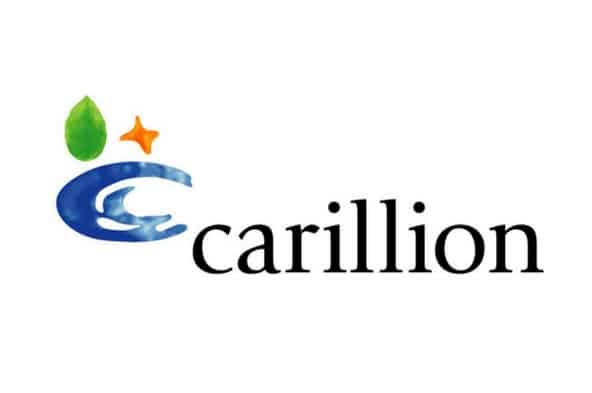What to do if your company needs to go into Administration
If your business is insolvent and under pressure from creditors, entering into administration can protect you from legal action while your business restructures.
The administration is a type of insolvency procedure. After your business enters into administration, an insolvency practitioner will be appointed to act as your business’s administrator and run the business with the best interests of its creditors in mind.
Depending on the best course of action, the administrator may facilitate a turnaround, allowing you to return to active trading, or close the business via voluntary liquidation.
If your business is facing pressure from its creditors and you think that administration may be a good option, contact us. Our insolvency practitioners can help you make the best decisions for your business, including entering your business into administration.
What is Administration?
As we explained above, administration is an insolvency procedure in which an administrator is appointed to run your business. Entering into administration protects your business from legal action initiated by its creditors, such as attempts to liquidate (“wind up”) your business.
As company director, you’ll lose control over your business during administration. The business will be run by an insolvency practitioner with the aim of maximising the interests of the creditors while, if possible, allowing the business to recover.
During the administration process, the insolvency practitioner may negotiate with creditors via a Company Voluntary Arrangement (CVA). If the business isn’t financially viable, the administrator may also opt to close it via the voluntary liquidation process.
If your business successfully recovers and exits administration, you, as a company director, will regain control over the business as it continues trading.
In certain cases, pre-pack administration may be the best option for your business. A pre-pack administration allows you, as a company director, to purchase certain business assets at a fair market value via a new company, preserving some or all of your previous business.
Administration: The Basics
- Entering into administration shields your company from legal action by creditors. If your business has received a statutory demand letter or is being pressured with legal action by a creditor, entering into administration may be your best option.
- Your business needs to be insolvent, either via cash flow or its balance sheet, to enter into administration. Administration is most appropriate for businesses with a significant asset value.
- Entering into administration isn’t the only option your company has if it’s insolvent and under creditor pressure. You may also be able to propose a CVA or, if your creditor is HMRC, negotiate a Time to Pay (TTP) arrangement.
- If you believe that parts of your business can be continued, a pre-pack administration may allow you to purchase business assets prior to entering into administration via a new company.
- The administration process can take anywhere from a few weeks to several months to complete, depending on the size and complexity of your business. It’s uncommon for a company to stay in administration for longer than one year.
- Administration can be quite a costly process. As such, it’s usually not recommended if your business has relatively few assets and/or cash flow. If your business has very few assets, voluntary liquidation may be a better option.
Advantages of Administration
Entering into administration can offer several advantages, particularly if your business is a good fit for this insolvency procedure. Key advantages of administration include:
- Protects your business against legal pressure from creditors and HMRC. After your business enters into administration, it will be protected against any legal actions, such as winding up petitions, filed by its creditors.
Entering into administration can also shield your business against legal action from HM Revenue and Customs. - Puts an insolvency expert in charge of your business. You’ll need to give up control over your business during administration. During this period, an experienced insolvency practitioner will take over administration of the business.
Although it can be difficult to lose control of your business, having a qualified insolvency expert at the helm is a significant advantage, as the administrator will draw on their skills and experience to work with creditors and, if possible, help your business recover. - May help your business to recover and survive. An administrator will typically act to preserve your business and facilitate its recovery, as this outcome tends to produce the best results for creditors.
While entering into administration doesn’t guarantee recovery, there’s a serious chance that your business may be able to turn around in administration, allowing you to regain control over the business in the future. - Keeps your insolvency options open. While in administration, your business can, if appropriate, propose a company voluntary arrangement (CVA) to its creditors, allowing the administrator to negotiate new debt repayment terms.
- Allows for continuity of your business. In a pre-pack administration, certain parts of your business may be purchased and preserved, allowing you to retain staff, preserve relationships and maximise asset value.
Disadvantages of Administration
- Lack of control. After your business enters into administration, you and other company directors will no longer maintain control over the business.
- Customers and suppliers will become aware of the administration. If your business enters into administration, a note informing that your business is in administration will be appended to correspondence with customers and creditors.
- Creditors retain the right to appoint an administrator. Creditors, including banks and suppliers, may be able to appoint an administrator of their choice to run your business in administration.
- Often involves significant costs. Administration is quite a costly insolvency procedure, particularly compared to alternatives. As such, it’s only suitable for businesses with cash flow and significant asset value.
Alternatives to Administration
Administration isn’t the only option if your business is financially distressed and under pressure from its creditors. Other options include:
- Financing. Even if your business is under significant financial distress, financing options may be available. Your business might be able to use invoice discounting, factoring or a secured loan to generate cash flow and pay its creditors, avoiding legal action.
- Company Voluntary Arrangement (CVA). Proposing a CVA will also provide protection against legal action from creditors. During the CVA process, your business may be able to write off debt and negotiate new repayment terms with its creditors.
- Pre-pack administration. In certain cases, a pre-pack administration may be an option for your business. This allows for some level of continuity if existing business assets are purchased by a new company.
- Voluntary liquidation. If your business is no longer viable, voluntary liquidation may be the best option. This will result in the closure of your business and the sale of its assets to repay its creditors.
Talk to Our Insolvency Experts
If your business is under pressure from its creditors, it’s important to talk to an expert as soon as possible. Acting quickly maximises your options, allowing you to make the best decision for your business.
As experienced insolvency practitioners, we’ve helped hundreds of UK businesses to negotiate with creditors and make use of procedures such as administration. Our insolvency experts can provide free, private advice to help you protect and preserve your business.
To discuss your business’s situation and learn more about your options, please contact us on 0161 8719 842 or send us an email to schedule your free private consultation.


